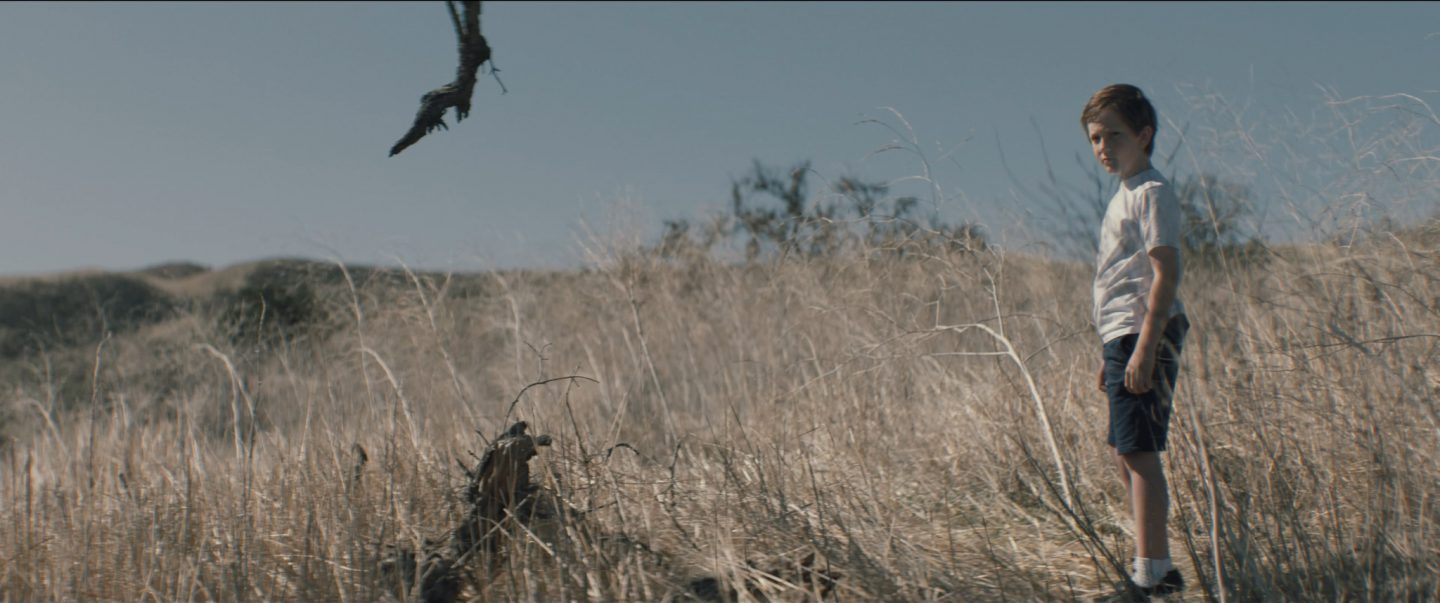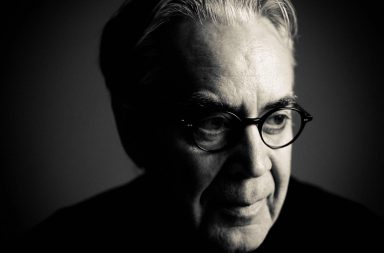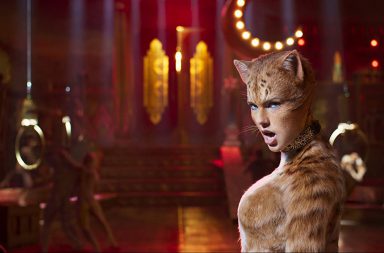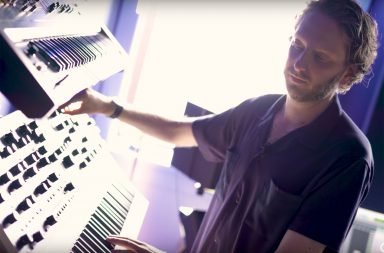2018 has been one of the deadliest years on record for mass shootings in American schools, including the infamous Parkland shooting on Valentine’s Day, which makes Safety the timeliest film you will see this year. Although he already showed it at festivals—already winning a few awards—the L. A.-based French director Fabrice Joubert cannot hide his anxiety about the release, today, of his short film: ‘In the United States, I have only heard unambiguous opinions: people either love it or hate it. It will be interesting to see how people will respond to it in Europe.’ Based on a short story by Lydia Fitzpatrick, Safety takes place in the school gymnasium, where third-graders are having class when they are interrupted by gun detonations.
The film comes at a crucial time when the debate about gun control in America is being reshaped by politics and gun-selling companies, but it refuses to take sides, reaching out for decency and lyricism instead. According to Joubert, that is precisely what ‘upsets people. Somehow, it creates an uneasy feeling which keeps them from having a deeper thought about it.’ The lyricism he created with a very strong visual identity—close-ups, colour contrasts, slow-motion shots—is deeply supported by the music, with an original score by French composer Mathieu Alvado. Both come from the world of animation: Joubert is an animator and a director—Safety is his first live-action film—and Alvado spent most of his composing career scoring animated shorts.
Although the music hardly reaches half the duration of the fourteen-minute film, the director and the composer went the whole nine yards, recording the music with the prestigious London Symphony Orchestra (LSO), which recorded some of the most memorable film scores ever written—the original Star Wars trilogy, Titanic, The Man Who Knew Too Much, Doctor Zhivago and Raiders of the Lost Ark, just to name a few. But the composer emphasizes that hiring the LSO for a low-budget short film is not something unaffordable. ‘People think that the LSO is too expensive. Yet, there is a standard wage for all musicians so, if you put aside the ancillary expenses, they all cost the same.’ According to Mathieu Alvado, the most daunting thing about recording orchestral music is rather the huge amount of work implied by such an enterprise: ‘Directors and producers often don’t realise that the process of creating film music is similar to the process of creating a film. There is pre-production, production and post-production. That makes a lot of steps, a lot of organisation and it involves a lot of people, as opposed to a composer who does it all by himself in his home studio.’ He started composing with musicians, then with bigger ensembles and finally with orchestras, not only offering a counterpoint in the abundant world of short film but also proving that having an orchestra to play the score for a short film is something to consider when it fits the project. ‘There is a whole culture now in which directors, spontaneously, don’t want orchestral music,’ concludes Fabrice Joubert. ‘But an artistic choice has to come first and foremost from a common desire from both the director and the composer, and ours was to have the orchestra.’
Score It Magazine: What is your background and how did you two meet?
Fabrice Joubert: I come from the world of animation. I have a classic background: I studied animation at the Gobelins school in Paris and I had been lucky enough that, when I finished school, DreamWorks, which at that time had just been created and was looking for animators around the world, hired me. I came back to Europe seven years later, worked at Aardman Studios and then came back to Paris where I did a short film, French Roast. I then worked at Illumination Entertainment in Paris, and they sent me back to Los Angeles five years ago, where I’m currently working on the Illumination attractions for the Universal Studios theme park, so I’ve had quite an eclectic career (laughs). But I wanted to do live action ever since I was in college, where I studied film for four years, so I took a break to do Safety, after I discovered the short story by this young American author, Lydia Fitzpatrick, which I loved. Mathieu and I met through a mutual friend, just because we were both film music lovers. We didn’t plan to work together when we first met, but I knew I wanted to work with him and we did on that film.
Mathieu Alvado: My background is quite classic as well. I studied at the conservatoire, first in Bordeaux, then in Saint-Maur-des-Fossés, and finally in Paris. I had always wanted to do film scores but conservatoires had no specialised curricula in film music at that time, so I took the classic Musical Writing courses. I knew that the Conservatoire de Paris would be the last one I would attend, so I decided to send emails to all film schools I could find, saying that I wanted to score the students’ films, that I could find musicians, a sound engineer, a recording studio… All of that for free. But for a whole year, nobody replied (laughs)! Then, at the Conservatoire, I found an ad on the Musical Writing department’s door, from a student at Arts Décos [Ed. One of the oldest and most prestigious art and design schools in France] who was looking for a composer for her animated short film. I was the only one who answered (laughs). So I wrote music for her film and asked some of my friends from the Conservatoire to come and record the music. Then I did another animated short film directed by a student from the same class. In France, animation schools show their students’ films to students from other schools, so I ended up scoring a lot of animation shorts for four or five years. I had more and more musicians who came to record the music, and in the end, when I had fifty, sixty musicians, I thought it would be time to stop: it was exhausting, there was no contracts and there was no guarantee that musicians would show up at the recording sessions. But in the meantime, I had been hired as an orchestrator and a composer on short films and that’s how I started. The funny thing is, some of the students I’ve worked with on their graduation films then worked with Fabrice on French Roast, so I already knew his work when we met.
Is it more relevant to do a film such as Safety in live action as opposed to animation?
F. J.: My only wish was to make a live action film, long before I found my subject. I spent a lot of time reading short stories, and since I knew I would have to self-produce it, I had to find something reasonable enough to fit a small budget. When I read Safety, I reacted to it in a very emotional way. Even though I thought about doing it in animation, my urge to do live action was stronger, so I didn’t give it a long thought, actually. My instinct told me to work with actors, to deliver all these emotions through the actors’ performances on such a subject. It was more of an intuition, a personal choice.
What is the hardest thing to deal with on a live action film?
F. J.: Actually, I rushed into it innocently—had I known better, it would have scared me. When I realised how hard and intense it was, I decided to go for it without asking myself any questions. It was all about being reactive, and that suited me perfectly. When you work on an animated film, you take time to do this and that, you can go back to a shot six months later. But there, we had four days of shooting and a very tight schedule. I also discovered a lot of things in the editing room: some shots were missing, so we resolved the problem in taking advantage of the editing and the sound effects. Actually, I think that even improved the film. I knew right from the start that the score would be important because I conceived the film almost entirely on visuals—there is little dialogue—so we had to find a tone that would be appropriate to the theme that the film tackles.
M. A.: The thing I love with directors who come from animation is that regardless of the project they’re doing, the first cut is almost always the final cut, as opposed to live action directors, who usually try and change a lot of things from the first cut.
F. J.: The first thing we did together was to think about how much music there would be. I had in mind to put music throughout the film but Mathieu immediately challenged me to do that by asking me if I needed music for the office scene. Then I realised that it would be more effective without music and, well, the sound effects made the scene more realistic and more interesting.
In that scene, there is only sound, but it feels like music. You hear one of the hidden kids counting, the sound of the gun banging on the lockers, all of that, combined with the editing, creates a rhythm.
F. J.: That’s right. My approach was from the point of view of the characters. I was interested in delivering their experience, so, going that way, in their experience, there is no music. The impact of the scene would have been weakened by the music.
M. A.: Putting music on that scene would have turned it into something too artificial. It would have given it a thriller feel that would not have been appropriate. The most important questions that I think a composer and a director should ask themselves are: when does the music come in, when does it go out, and why? So we decided to let the music start when the teacher goes out of the locker room because that’s when the actual action begins. Had we put put music in the office scene, we would have given a hint to the viewer, while without it, you don’t know what is going to happen and the viewer is free to feel whatever comes to his mind.
How did the idea of having the London Symphony Orchestra came to your mind and how did you convince them to do it—other than with a cheque book?
M. A.: I was going to say that, you need a cheque book (laughs)! When Fabrice showed me the film, we talked about its musical aesthetic. He liked the music I did for a short film a few years ago, To Build a Fire, which I already did with the London Symphony Orchestra. So I already knew how much it would cost, then I suggested to do it with a smaller ensemble but Fabrice liked the orchestra better. The solution we used, which is a thing I’ve done for ten years now, was that I had to find other projects to score on the same recording session. The minimum duration of a recording session with the orchestra is three hours, which represents fifteen to twenty minutes of music. Of course, recording several projects in one session allows to divide the cost of it for each project by two or three. So I recorded two other projects: a video game called Ghost of a Tale, made by Lionel [Gallat], a friend of Fabrice’s who also used to work at DreamWorks and Illumination, and a Polish animated short film which needed four minutes of music. We did a four-hour recording session and we actually finished twenty minutes earlier because the orchestra is colossal, even though it was really a shame that we did not have any more music to record.
It is a surprising choice. Usually, short film directors would rather consider using a small ensemble or even a single musician…
F. J.: I have a particular taste for the orchestra, but it had more to do with the way I conceived the film rather than being just the whim of a director (laughs). Safety deals with an emotional, visceral subject, and orchestral music is very expressive, so I felt that it would help the film, especially for the ending, which I imagined like an emotional crescendo that would trigger something from the viewer’s side. There is a lyricism in the film which I completely assume, and Mathieu and I worked a lot on it.
M. A.: I feel like a particular case because directors only call me when they want an orchestra—I am the one who, most of the time, redirects them towards smaller ensembles. Sometimes, a director really wants an orchestra but it does not fit the film or the budget does not allow it. As a composer, I feel responsible for the quality of my work. I would rather have a good string quartet than a bad orchestra. When Fabrice told me about the orchestral score on To Build a Fire, I knew it would work for Safety, but a smaller ensemble would have worked as well, so I wanted to be sure that that’s what he wanted. Fortunately enough, we had the money to do it with the orchestra. The ending is a succession of slow-motion shots and the orchestra was perfect to give the scene its proper depth. You know, in the end of the day, people who watch a film don’t care if you do have the budget to record an orchestra or if you don’t, so either way, whatever you do, you have to do it well.
Interview prepared, conducted, transcribed and translated by Valentin Maniglia. Edited by Marine Wong Kwok Chuen.





